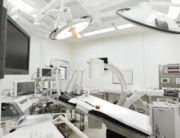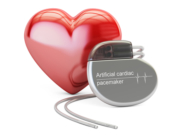The National Transportation Safety Board (NTSB) just released its Safety Study: Reducing Speeding-Related Crashes Involving Passenger Vehicles. The study found over 9,000 fatalities and 336,000 injuries in speeding-related accidents in 2014.
Who Comprises These Fatalities and Injuries?
While some drivers may justify speeding as a behavior that only exposes the speeding driver to a risk of injury or death, this report indicates otherwise.
The report did find that the majority of the people hurt or killed in speed-related crashes were the speeding drivers. Of all the deaths caused by wrecks in which speeding was a factor, 63.9 percent of the people killed were the speeding drivers.
However, the study also found that 19.8 percent of the fatalities were passengers in the speeding cars.
The data also shows that people in other, non-speeding vehicles made up 12.2 percent of the total fatalities in these accidents and 18.3 percent of the serious injuries, but 43.2 percent of the minor injuries.
In fact, people in the non-speeding vehicles had a higher minor injury rate than the speeding drivers. Speeding drivers made up 41.9 percent of the total minor injuries. They also suffered 62.3 percent of the serious injuries. When you combine all the levels of non-fatal injuries, they break down like this:
- 43.7 percent Speeding drivers
- 40.9 percent Drivers and passengers in other (non-speeding) vehicles
- 14.5 percent Passengers in speeding vehicles
- 0.9 percent Pedestrians, bicyclists, and other/unknown
So, while speeding drivers did make up a high percentage of the injuries and fatalities that occurred, innocent bystanders made up 36.1 percent of the fatalities and 56.3 percent of the injuries.
Can New Technology in Vehicles Help Reduce Speeding?
Possibly. Instead of simply telling a driver the speed at which he is traveling, new technology called intelligent speed adaptation could warn the driver that he is speeding or electronically limit the speed of the vehicle.
However, the latter could have serious consequences, as sometimes it is necessary to accelerate suddenly to avoid an accident or to get onto a highway.
A warning system might be safer and better received by the driving public as being less invasive than a system that limits the speed at which a car can travel. Both types of systems, warning and speed limiting, would rely on the car’s speed detection system working with GPS-derived speed limit data.
There are several potential problems with the data on which these systems would rely:
- The vehicle’s speed detection system can be inaccurate.
- The GPS-derived speed limit data can have a lag time between when the vehicle enters a new speed zone and when the GPS detects it.
- GPS data is incomplete or incorrect in many locations across the United States.
- The systems may not work well together.
However, the NTSB suggests that it could get car manufacturers and car purchasers to “buy in” to this type of technology by making it a part of new car safety rating systems. While this may work initially at the point of sale, there could be a backlash when people realize that they are not in full control of their vehicles.
Stay Safe With Montero Law Center
Stay safe and up-to-date with news from Montero Law Center. Check out our blog here.
 English
English  Español
Español 

